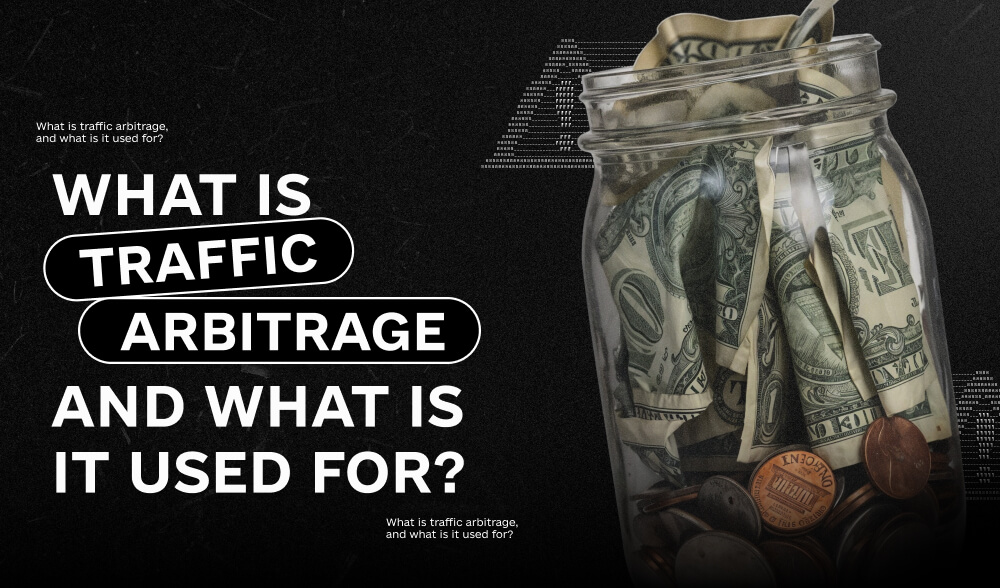Don't miss interesting news

You definitely saw it. Screenshots from Telegram: “+380$ overnight”, “new case: ROI 230%”, “I poured from the build, the après came in!”. And all of these are not famous businessmen or millionaires, but ordinary people with a laptop and access to an advertising account.
It’s not a fairy tale, but it’s not free either. We are talking about traffic arbitrage, a topic that is surrounded by a lot of myths, legends, and complaints about wasted budgets.
You may have heard something about it. Or maybe you think that this is a “gray topic for those who are in the know”. In any case, this article is for you.
In simple words, without water and academic formulas, we will analyze what arbitrage is, how to make money on it, where you can cash in, and why this topic is not only about “pouring in” but also about analysis, creativity, and strategy.
Imagine that you bought a pack of chocolates for 10 UAH, laid them out nicely on the counter, and sold each one for 20 UAH. The difference is your earnings. This is arbitrage. Only instead of chocolates, it’s traffic, and instead of the counter, it’s online advertising.
Traffic arbitrage is when you buy traffic (people’s attention) cheaper and “sell” it more expensive. Not literally, of course – you lead people to an offer where they buy something, subscribe, register, etc. And you get paid for it.
Simply put:
“You pay $50 for advertising → you get $100 for conversions → you earned $50 net.”
It’s like marketing, but with excitement: everything is fast, numbers are in front of your eyes, and each test is like a sprint.
Traffic arbitrage is not only about fast money (spoiler alert: it is not always fast). It’s about the ability to monetize other people’s products through your expertise in advertising. And if you have ever launched a targeting campaign, collected traffic from TikTok, or understand what UTM tags are, you are closer to an arbitrageur than you think.
Who can benefit from this?
What’s the trick?
It is also a school of survival in digital: here you learn analytics, creativity, and planning. And all this is based on your own experience.
Arbitration is not magic. It is a scheme of several steps that looks something like this:
Let’s take an example. You have an offer – a sleep app, $3 for each iOS installation in the US. You shoot a TikTok with the phrase: “I couldn’t sleep for months – and then one video changed everything.” You publish it through Ads Manager, the budget is $50.
As a result, you get 3000 views, 250 clicks, and 40 installs. 40 × $3 = $120. Minus expenses, the net profit is $70.
It is not always so smooth, but this is the scheme.
Arbitrage looks simple – until you start. And then the reality sets in: banned accounts, zero traffic, and a minus on the balance. This is what beginners often do wrong:
“Oh, here is $80 per conversion – I will definitely take it!”. But the offer is complicated, conversion is difficult, and you have no experience. You’re not going to get any results either. It’s better to start with a simpler one where it’s easier to get the first results.
For example, TikTok forbids gut ads, and you just launched one. The result: a ban without appeal.
I launched one creative for $100 and that was it. And it didn’t work. And you are already without a budget. The right approach is 3-5 creatives for $10, and only after the tests, scale up.
“I have something spinning… as if they are clicking… well, there is something…” This is not analytics. Without numbers, you are not an arbitrager, but a roulette player.
You see that someone has an offer with a beauty product, and you take the same one and make a similar creative. But the time, geo, and audience are different. Arbitrage is not Ctrl+C, it is constant testing.
In arbitrage, everything is decided by numbers. But don’t worry – it is not a high school math class. Here is the main thing to watch if you don’t want to waste your budget:
How many of those who clicked actually took an action (registration, purchase, etc.). There were 100 clicks and 5 registrations, so the CR is 5%.
Earned $40 from 200 clicks, EPC is $0.20. The higher the EPC, the better the ad is “reflected”.
If you spent $20 on 100 clicks, it means CPC is $0.20. Always compare this with EPC. If EPC is higher than CPC, you are in the black.
ROI = (profit – expenses) / expenses × 100%. For example: you spent $50 and earned $80, so ROI = 60%. This is your main goal – to be in the black.
A life hack is to get a simple sign and write down what you have launched and how you have launched it. It really saves nerves when you start testing dozens of connections.
Okay, you’ve read this far, so it’s interesting. Here’s a short list that will help you not to fall face first into creativity:
Arbitration is not an “overnight money-maker”. It’s more like a gym: at first it hurts, then it’s interesting, and then you can’t imagine yourself without this rhythm.
And most importantly, don’t just do it because “everyone else is doing it”. You need to pour with your head. And with analytics. Because if you just click “Launch Campaign,” it’s not arbitrage. This is “setting everything to zero”. </span